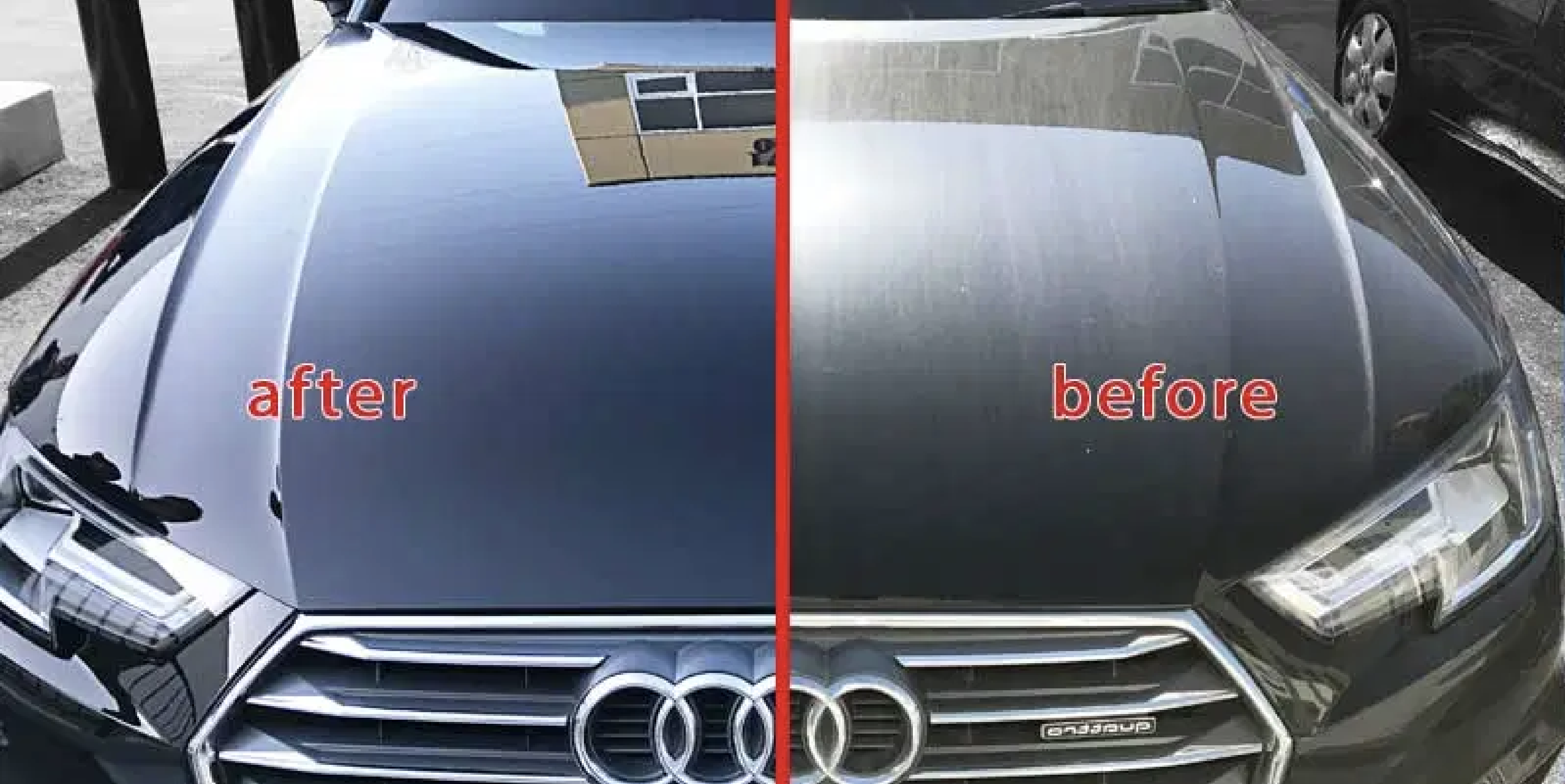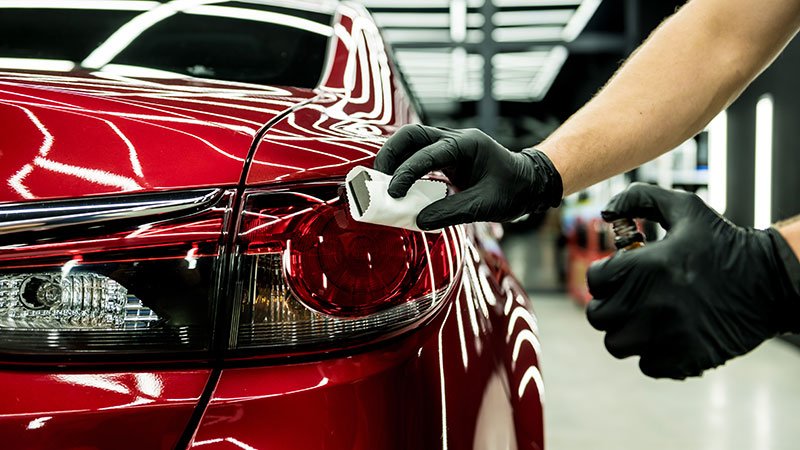Advanced Water-Resistant Protection for Your Ride with Ceramic Coating Denver
Advanced Water-Resistant Protection for Your Ride with Ceramic Coating Denver
Blog Article
A Comprehensive Overview to the Types of Ceramic Finishing on the Market
Ceramic coatings have emerged as a critical service across numerous industries due to their distinct homes and applications. As we discover the distinctive qualities and applications of these finishings, the implications for performance and longevity become progressively obvious, raising questions regarding which kind might finest fit your demands.
Comprehending Ceramic Coatings
Ceramic finishings are advanced safety services that have gained popularity in various sectors, especially in aerospace and auto applications. These layers include a fluid polymer that, when healed, develops a resilient, hydrophobic layer on the surface of the substrate. This layer gives boosted resistance to ecological contaminants, UV radiation, and chemical direct exposure, consequently expanding the life and aesthetic appeal of the underlying product.
The essential element of ceramic finishes is silica, which adds to their firmness and sturdiness. The application process normally involves surface area prep work, application of the finish, and curing, which can be attained via warm or UV light. When healed, ceramic finishings show outstanding bonding homes, allowing them to adhere strongly to a selection of surfaces, consisting of steels, plastics, and glass.
Along with their protective functions, ceramic finishes additionally provide ease of maintenance. Their hydrophobic nature decreases the adherence of dust and grime, making cleansing easier and much less frequent. On the whole, the adoption of ceramic coatings stands for a substantial improvement in surface security modern technology, giving both aesthetic and useful benefits throughout multiple sectors.
Kinds Of Ceramic Coatings
Various kinds of ceramic layers are offered, each developed to meet specific performance needs and applications. The most common kinds consist of:
Silica-based Coatings, these layers largely contain silicon dioxide and are known for their longevity and chemical resistance. They are widely utilized in vehicle and industrial applications.
Titanium Dioxide Coatings: Popular for their photocatalytic properties, titanium dioxide finishes are typically applied in environments where self-cleaning and antifungal residential or commercial properties are desirable, such as in structure materials and auto finishes.
Zirconia Coatings are defined by their high-temperature security and thermal resistance, zirconia coatings are utilized in applications such as turbine engines and high-performance auto parts.
Alumina Coatings, Exhibiting excellent hardness and thermal security, alumina finishings are frequently utilized in wear-resistant applications, including reducing devices and commercial machinery.
Hybrid Coatings:Integrating the homes of various products, hybrid layers use enhanced performance attributes, making them suitable for one-of-a-kind and requiring applications.
Each kind of ceramic layer offers distinctive functions, permitting users to pick the most proper option based upon particular ecological conditions and efficiency needs.
Advantages of Ceramic Coatings

In addition to durability, ceramic layers provide outstanding hydrophobic residential properties, permitting easy cleaning and upkeep. This water-repellent nature decreases the adherence of dirt, crud, and various other pollutants, which can prolong the aesthetic appeal and functionality of the surface. Ceramic finishes can considerably reference improve thermal resistance, making them perfect for applications that endure high temperatures.
Ceramic layers can add to energy effectiveness by showing heat, which is specifically helpful in industrial and automobile setups. On the whole, the various advantages of ceramic finishings make them a beneficial financial investment for various applications, guaranteeing optimum performance and protection.
Application Process
When applying ceramic coatings, a meticulous approach is important to accomplish ideal results. The application procedure usually begins with detailed surface preparation. This includes cleaning, decontaminating, and polishing Look At This the surface to get rid of all pollutants, consisting of dirt, oil, and prior waxes or sealants. A tidy surface makes certain correct bond of the coating.
When the surface is prepped, the next action is to use the ceramic finishing. The finishing needs to be used in slim layers, as thicker applications can lead to unequal coatings.
After application, the finish needs a particular curing time, typically ranging from a few hours to a complete day, depending on the product. Adhering to these actions carefully will take full advantage of the effectiveness and durability of the ceramic coating, offering a sturdy safety layer for the surface area.
Upkeep and Durability
To make sure the durability and performance of a ceramic layer, routine upkeep is vital. Ceramic coatings, known for their longevity and protective top qualities, need particular treatment routines to maximize their lifespan and performance. The very first step in upkeep involves regular washing with pH-neutral soap, staying clear of extreme chemicals that can degrade the coating. It is recommended to wash the vehicle consistently, ideally every 2 weeks, to stop the accumulation of contaminants that might compromise the layer's stability.
Along with regular washing, regular inspections are essential. Try to find signs of wear or damage, such as hydrophobic residential properties decreasing or surface area blemishes. If needed, a light polish may be applied to renew the covering without stripping it away.
In addition, the application of a booster spray can boost the covering's hydrophobic impacts and restore its gloss. This is especially useful for coverings that have actually been in use for an extended period. Ultimately, by sticking to these upkeep practices, one can considerably expand the life of a ceramic finish, making sure that it remains to give optimum defense versus environmental variables and preserve the aesthetic charm of the automobile.

Conclusion
In verdict, ceramic finishings represent a flexible service for an array of applications, offering a range of types such as silica, titanium alumina, dioxide, and zirconia. Overall, ceramic layers contribute considerably to improving the longevity and performance of numerous surface areas across multiple markets.
Ceramic finishes have emerged as a pivotal remedy across different industries due to their distinct residential properties and applications.Ceramic coverings are sophisticated protective services that have gained popularity in numerous industries, especially in auto and aerospace applications. Ceramic coatings can significantly improve thermal resistance, making them excellent for applications that endure high temperatures.
Overall, the various benefits of ceramic coatings make them a beneficial financial investment for numerous applications, making certain optimum efficiency and protection.
In conclusion, ceramic finishings represent a flexible service for an array of applications, supplying a variety of kinds such as silica, titanium alumina, dioxide, and zirconia.
Report this page